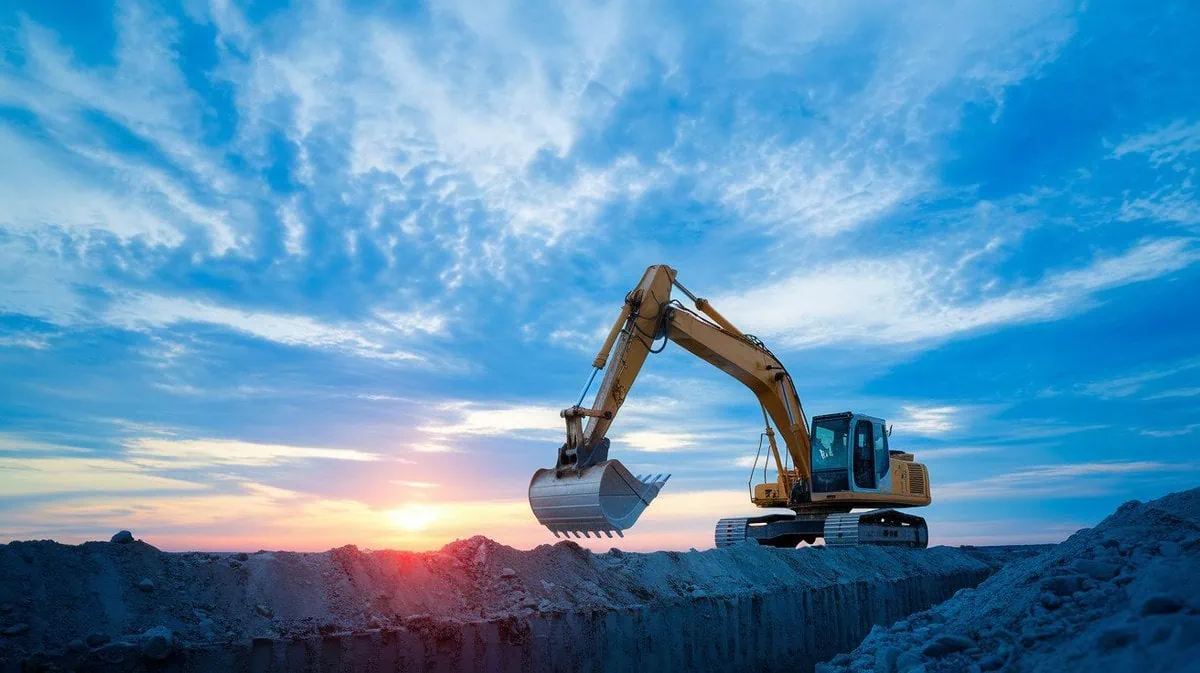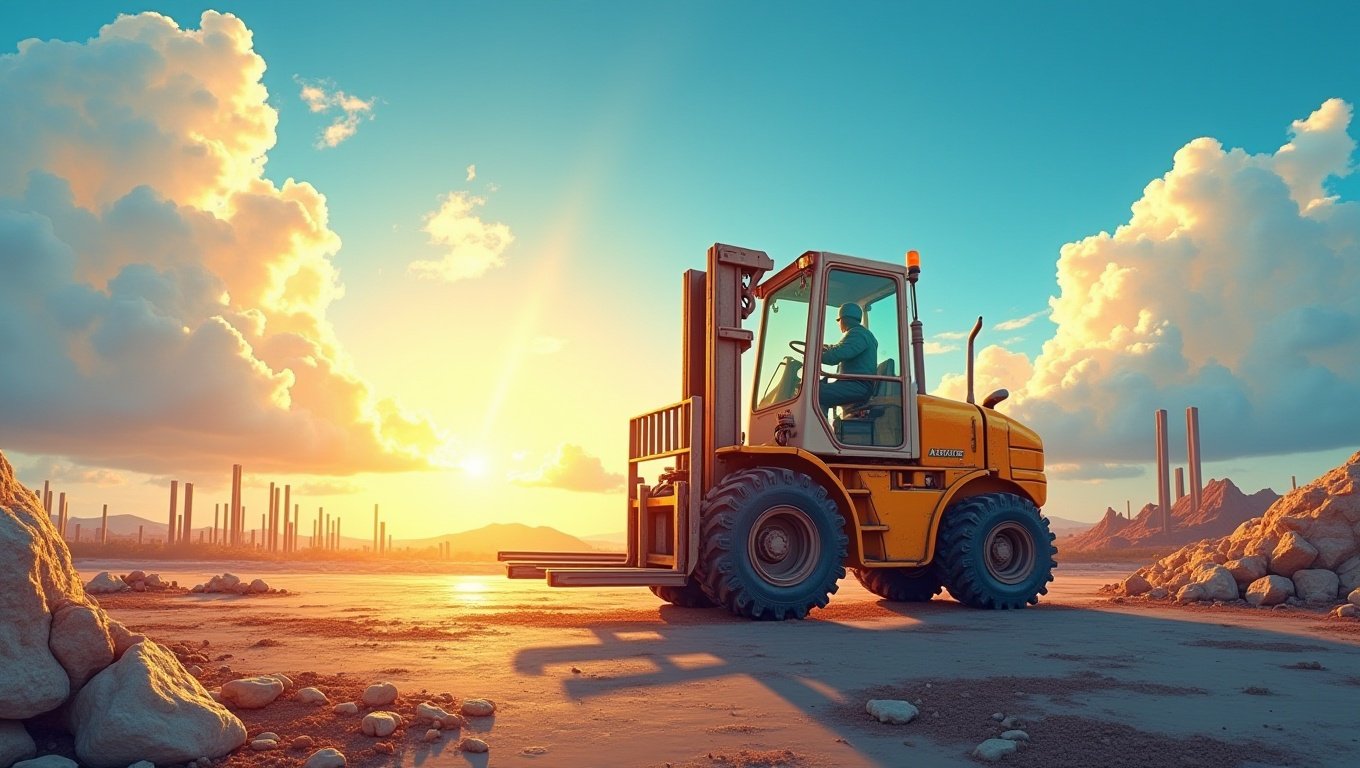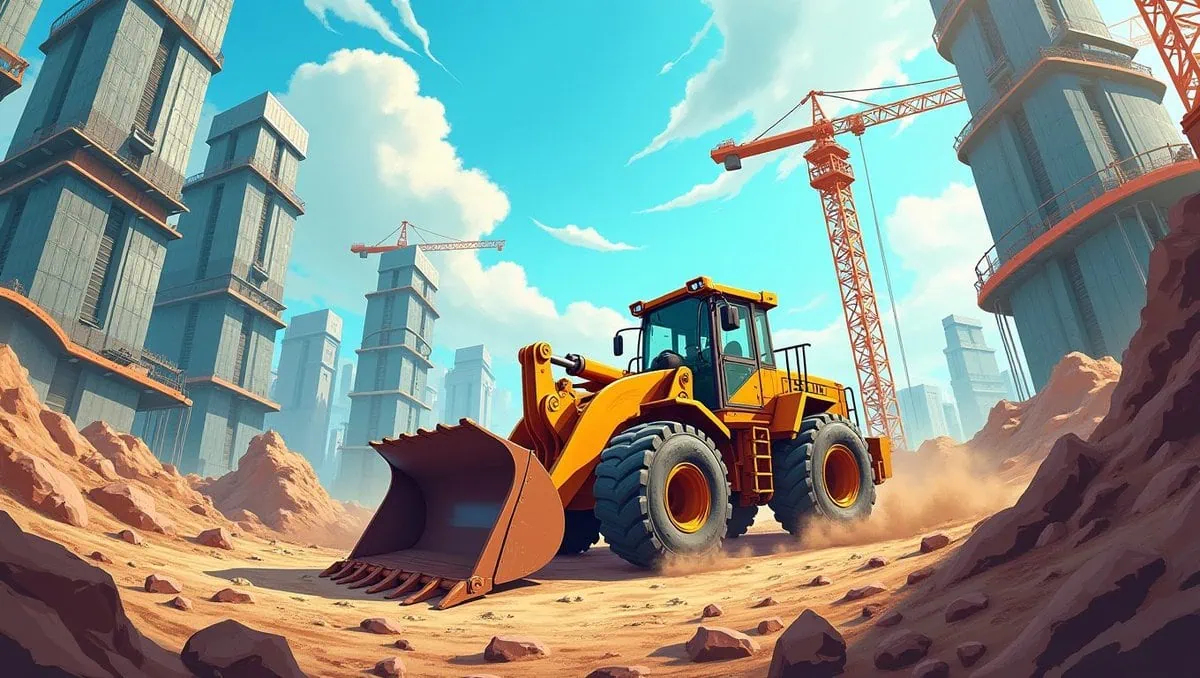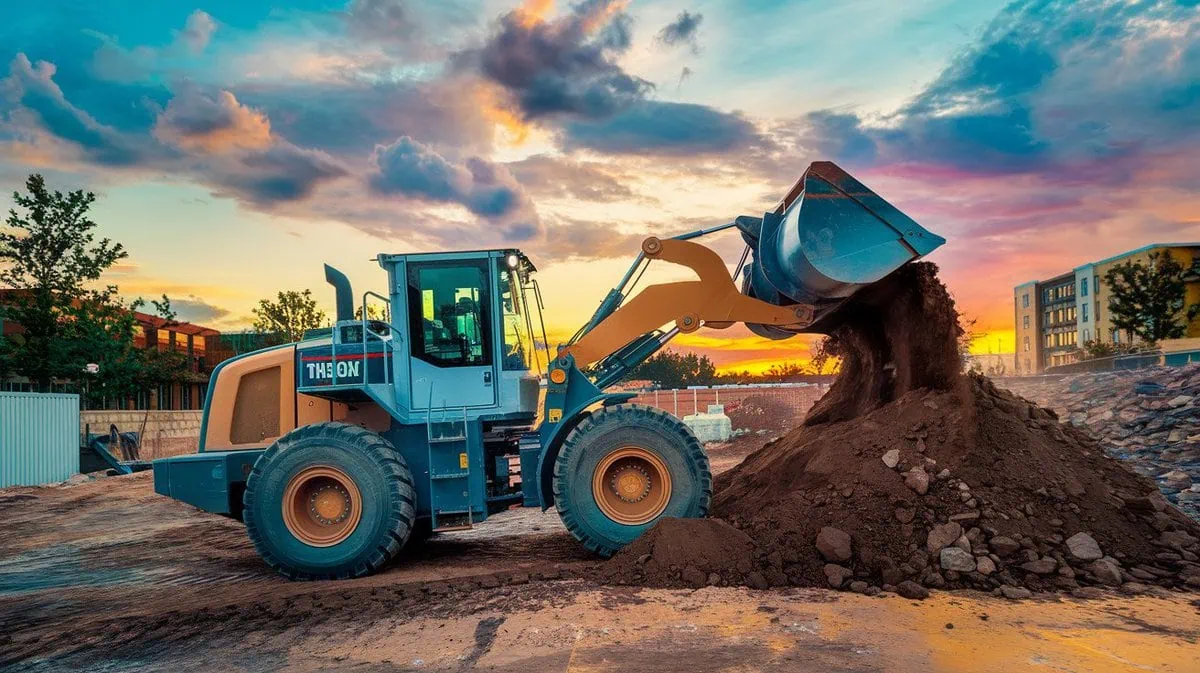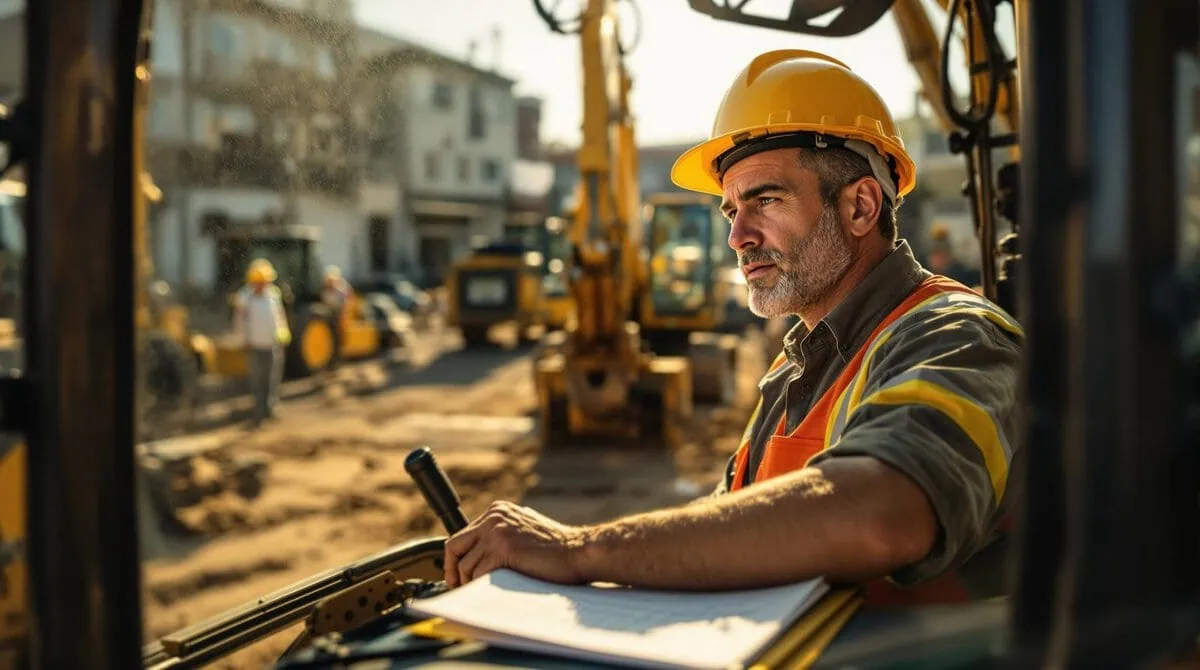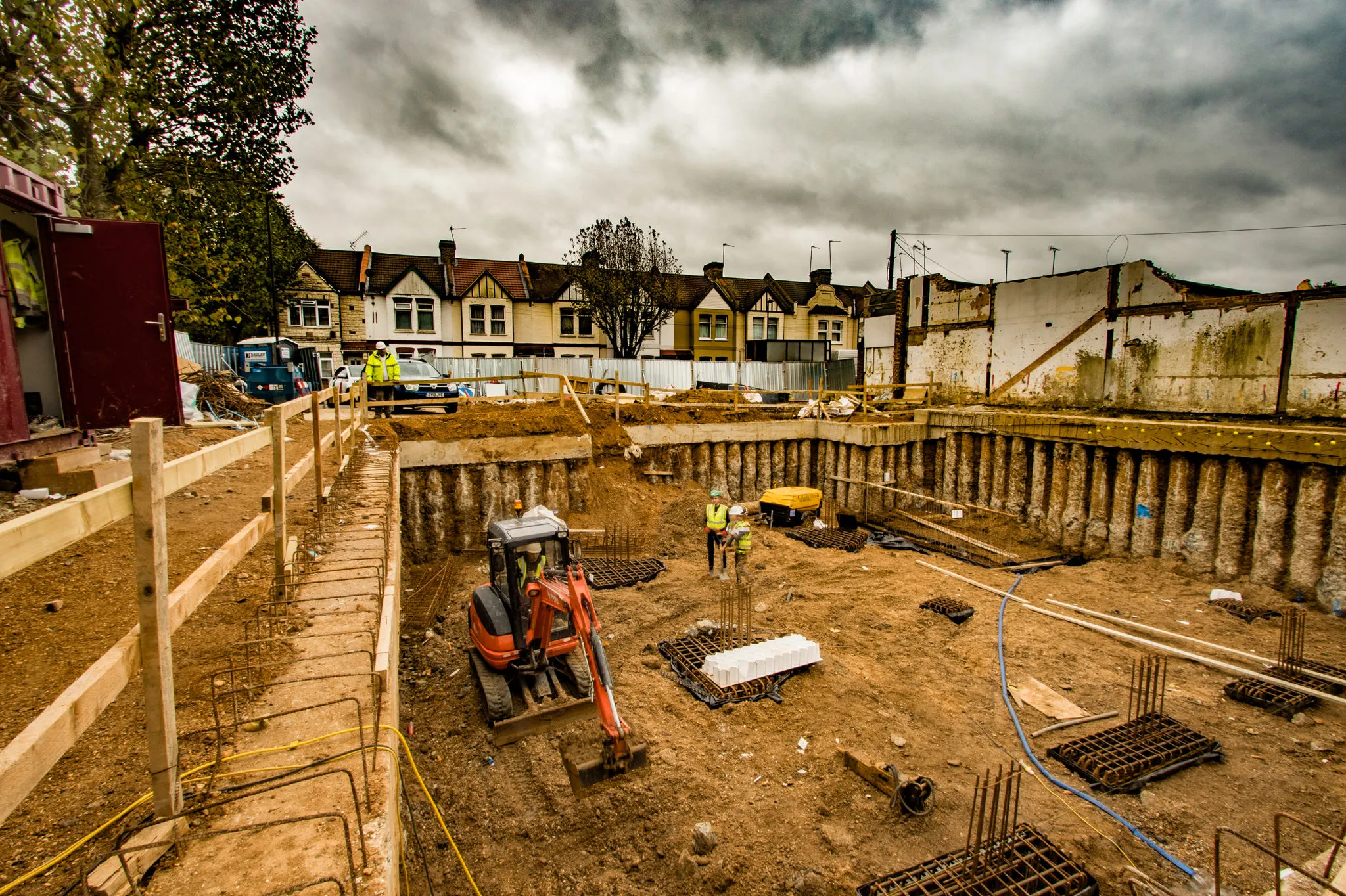As you look for a forklift to meet your construction or industrial needs, you must weigh the right lifting Gabelstaplerkapazität. That decision will dramatically affect your operation, especially when you pair it with heavy equipment like excavators. It is essential to get maximum efficiency and keep things safe.
Forklift capacity is determined by several key factors, such as the weight of the materials being handled, the operational environment, and the frequency of use. It’s critical to choose a forklift with the right capacity to ensure safe handling of materials, particularly when using the forklift to move heavy machinery or components like excavators.
So what are the main factors that will determine Gabelstaplerkapazität, and how do they work in relation to your needs, especially when working with large construction equipment like excavators?

1,What Factors Determine Forklift Capacity?
Forklift capacity isn’t a one-size-fits-all proposition. To figure out the right crane, you need to figure out what you need. It all depends on what you’re lifting. Are you working on flat ground, on a waterline, or up in the mountains? The kind of stuff you’re picking up will also determine what size forklift you need. If you’re using this large equipment like Bagger Und cranes, that’s just even more reason to get the right piece of equipment for the job you need to do.
Many things will affect how much weight your forklift needs to carry – if you work a lot, or if you don’t, or if the terrain of your worksite is changing a lot. The type and weight of the load need to be taken into consideration every time. Any good contractor or construction company has the right size Gabelstaplerkapazität for the job they need to do.
Probably the biggest factor to consider is the type of materials, goods, or machinery that you are picking up. If you’re taking a forklift and using it to move around an excavator, you need to make sure the Gabelstaplerkapazität is quite a bit more than if you’re just moving goods around a warehouse.
Another consideration is the environment in which you will operate this forklift. If you are working outdoors on a construction site or rough terrain, you also need more capacity to go over rocks and bumps. The distribution of the load is also a factor. If you have an uneven load, or you have the weight off to one side, you can put stress on the forklift, tear up the tires, or wear out the engines much faster than if the weight is evenly distributed down the centerline of the forklift. Ensure you know the exact size and weight of what you’re picking up before figuring out what size forklift you need
| Factor | Beschreibung | Impact on Capacity |
| Load Weight | The weight of the materials or equipment being lifted. | Higher weight requires higher capacity. |
| Load Center | The distance from the center of the forklift to the load’s center of gravity. | Longer load centers reduce capacity. |
| Terrain | The condition of the surface the forklift operates on. | Rough terrain requires higher capacity forklifts. |
| Forklift Type | Whether it’s a standard, rough terrain, or reach forklift. | Specialized forklifts may have different capacities. |
| Load Distribution | How evenly the load is distributed. | Uneven loads can strain the forklift. |
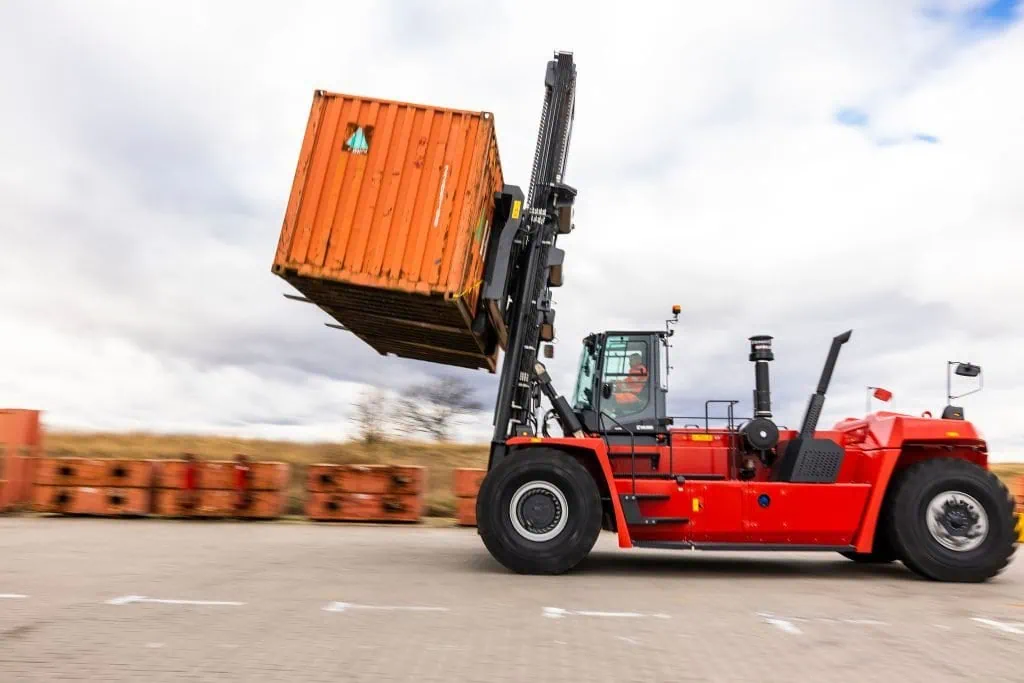
2,How Does Forklift Capacity Affect Excavator Purchases?
One more point about Gabelstaplerkapazität: When you buy an excavator or anything else, this is crucial. It allows you to move and handle the equipment you bought, to move it to and from the job site. It’s worth every dollar you table to get the correct size forklift to make sure you can handle the equipment you bought, including an excavator.
If you buy an excavator, or any equipment like that, that you have to move from one place to another, the forklift, the capacity will make a world of difference. It will make it easier on your equipment, on your people, and simply allows you to do that job more efficiently and effectively.
You don’t just have to have the right Gabelstaplerkapazität when working with excavators. You must have the right-capacity forklift so that when you load the excavator, or when you’re moving the excavator or other machinery around, you don’t overload the forklift. For example, if you’re moving a CAT320D excavator – the weight of the excavator is typically over twenty tons. If you figured out you need that excavator moved or want to rent it or whatever the case may be, you better have a forklift that has the right capacity to pick up twenty tons.
In some cases, you need a specific forklift, like a heavy-duty industrial forklift or a rough-terrain forklift, to handle these large, heavy machines. That’s because whether the forklift can handle the size of the object and the weight has to do with the load center of the forklift (the distance from the object center of gravity to the front wheels of the forklift). To calculate that, all you need to do is measure the object length.
It’s not just a matter of driving the forklift. It also comes to getting the machine lifted and put where you want it on the job site. If you try to pick up the machine with a forklift that has too small of a capacity, you’ll struggle to lift it. You could end up tearing something up, hurting somebody, or crumpling up the equipment. Make sure you have the right equipment to meet the capacity requirements you need on the job site, even if you need to hire somebody or look out for somebody.
| Excavator Model | Average Weight (lbs) | Recommended Forklift Capacity (lbs) | Forklift Type |
| CAT320D | 44,000 | 60,000 | Heavy-duty forklift |
| Komatsu PC200-8 | 42,500 | 55,000 | Rough-terrain forklift |
| SANY SY335C | 74,000 | 80,000 | Industrial forklift |
| CAT323F | 55,000 | 70,000 | Industrial forklift |
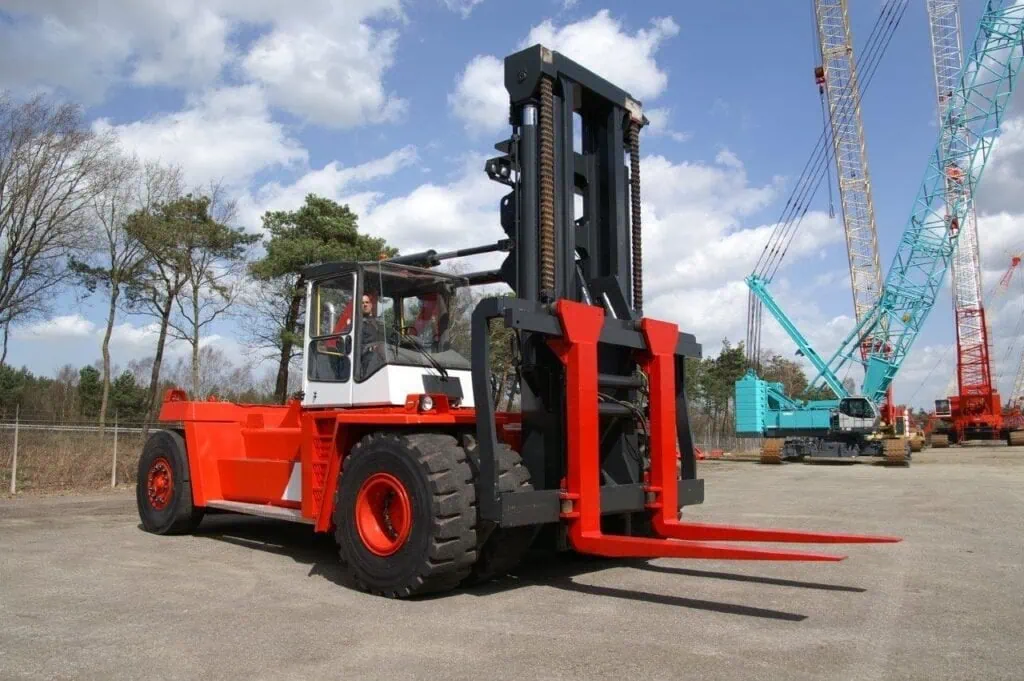
3,How to Choose the Right Forklift Capacity for Your Business?
Ultimately, understanding Gabelstaplerkapazität is pivotal when you buy equipment, so that your materials, including excavators, safely move from the staging area around the job site. When it comes to getting a forklift, ensuring that you have the proper forklift size is critical to maximizing efficiency and safety on a construction site.
The best Gabelstaplerkapazität for your needs depends on the type of loads you handle, your work environment or terrain, and how often you use the forklift. Make sure you analyze your job needs and choose the forklift size that helps you make the most money without creating a dangerous situation.
Know the load you will typically be moving. The bigger the construction equipment or pump you handle, the bigger the forklift you need. If you are going to use your compressor lift off road on the property or at the jobsite, the weight of the compressor and the rough terrain will dictate the size of the lift because a bigger lift with a bigger capacity gives you more stability and durability for the rough and rugged spots.
How often you will use the forklift matters. If you’re going to use your forklift every day, the bigger the better, so it doesn’t wear out. The more likely you are to use the forklift every day because you need to move equipment or input material off of a truck, the bigger the Gabelstaplerkapazität has to be. If you only need it to move your compressor once a month, then you don’t need as big of a lift because you’re not going to wear the lift out. It all depends on what you’re doing.
Get with professionals. An architect consults with an HVAC engineer or a structural engineer on the building framing. They know how to do it. If you’re not sure, find somebody who can do the calculation based on the load capacity & the loads you’re moving. Do not overload a forklift, even if you’re only over by 50lbs, because it matters. It truly does. It will compromise the safety of that lift, and it will wear it out faster.
| Work Environment | Recommended Forklift Type | Capacity Range (lbs) | Key Considerations |
| Indoor Warehouse | Standard Counterbalance Forklift | 3,000 – 10,000 | Smooth, flat floors, lighter loads. |
| Construction Site | Rough Terrain Forklift | 8,000 – 36,000 | Uneven surfaces, large and heavy equipment. |
| Outdoors on Slopes | All-terrain Forklift | 8,000 – 15,000 | Variable terrain, requires stability. |
| Heavy Equipment Handling | Heavy-Duty Industrial Forklift | 20,000 – 100,000 | Heavy machinery like excavators, stability is critical. |

4,What Are the Risks of Overloading a Forklift?
It can be tempting because you’re in a rush. It’s going to be expensive to be in that big of a rush. Likewise, some people try to work a smaller pump to its maximum limits to move something a little bit heavier than they should because they don’t want to go to the trouble of getting a bigger pump just for one thing. Again, this is incredibly dangerous. Do not overwhelm the equipment. It’s called that for a reason. Pack – It. – In. Think of it that way. Don’t endanger your hard hat area. You could have operational hazards, equipment breakdowns, and safety issues on the job site. Use a free service to move your load properly.
By overloading the forklift, even by 500lbs, it could have tipped over in some experiments. Or it could not get the loads as high as they wanted. They quit because they didn’t want to break anything. The bottom line is, always choose the proper lift and load levels for your protection and cost-effective operation after you add up the damages, expenses, and time for all of the examples.
The faster they spin their wheels, the more they can get blisters. Fast and hard guy. When you need tons of Gabelstaplerkapazität in the thing you’re buying, the more capacity, the better. How much weight can you run with? Oh, put some weight on it. Run with a load. Use the more capacity pump. That always wins in a construction business.
For excavators, buying the right Gabelstaplerkapazität to move these monsters is crucial. If you don’t have the right capacity for the forklift, you could tip over or damage the excavator or other large piece of equipment. Then you stop your job, lose time, and add expenses.
If you choose the right Gabelstaplerkapazität for your business, you will make the right decision on safety and repairs. Don’t load over the capacity. Do get the most Gabelstaplerkapazität. Get in the habit of running around. If you’re trying to decide between one forklift or another, pick up a newspaper or a magazine and drive around with it. The weight of stuff to pick up will surprise you. The heavier the load, the faster you can drive around. It’s like having somebody else to help you pack the cart. It’s worth its weight in gold. Use a forklift. Pack – It. – In.
| Risk of Overloading | Impact | Consequences |
| Tipping | Loss of balance due to excessive load weight. | Forklift tipping over, causing damage or injury. |
| Mechanical Damage | Strain on lifting components and engine. | Higher repair costs, reduced lifespan of forklift. |
| Increased Wear & Tear | Overloaded forklifts will experience faster depreciation. | Frequent breakdowns, decreased productivity. |
| Safety Hazards | Higher likelihood of accidents on-site. | Injury to workers, equipment damage, and liability issues. |
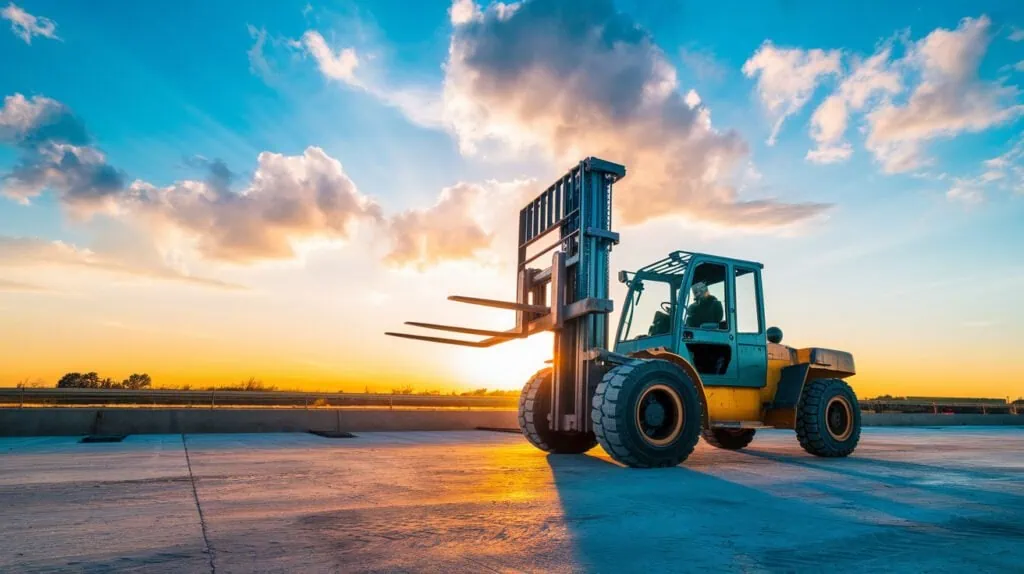
5,What Is the Maximum Payload of a Forklift?
It also ensures you don’t overload your forklift. Doing so could lead to a tip-over by raising the center of gravity too high or failing to brake correctly due to the weight of the load exceeding the hydraulic braking capacity. Always know a forklift’s payload limit, regardless of the make or model.
Hydraulic pressure adjustments just don’t apply when comparing one forklift to another. There’s no correlation. Payload is the key common denominator for lifting.
The weight limits of the machinery are determined by the machinery’s design, not by the forklift. If you’re lifting a 10,000-pound excavator attachment, the Gabelstaplerkapazität used will have to lift 10,000 pounds or more. The maximum lift for Gabelstaplerkapazität is determined by its design, size, and type. A typical forklift you find at a rental yard may haul 5,000 pounds. A heavy-duty forklift could lift 50,000 pounds or more. Always adhere to the forklift’s payload rating when moving big equipment like excavators which ensures the weight of the excavators and any accessories you lift is less than the payload rating on the forklift.
If you’re not sure about what the forklift will hold, then go to the specifications or work with someone who knows the equipment to determine the correct forklift to use. Never exceed the payload. If you use a forklift built for 5,000 pounds and attempt to lift a 6,000-pound excavator, bad things can happen. The forklift can tip. It can break. Even worse, a heavy excavator could fall and injure someone. Disasters happen when you exceed equipment limits. Don’t let that happen.
| Forklift Type | Maximum Payload Capacity (lbs) | Typical Usage |
| Standard Counterbalance | 5,000 – 10,000 | Warehouse, light industrial tasks. |
| Rough Terrain Forklift | 8,000 – 36,000 | Construction, outdoor work. |
| Heavy-Duty Forklift | 20,000 – 100,000 | Handling heavy machinery, construction equipment. |
| Telescopic Forklift | 8,000 – 12,000 | Lifting heavy loads at heights. |
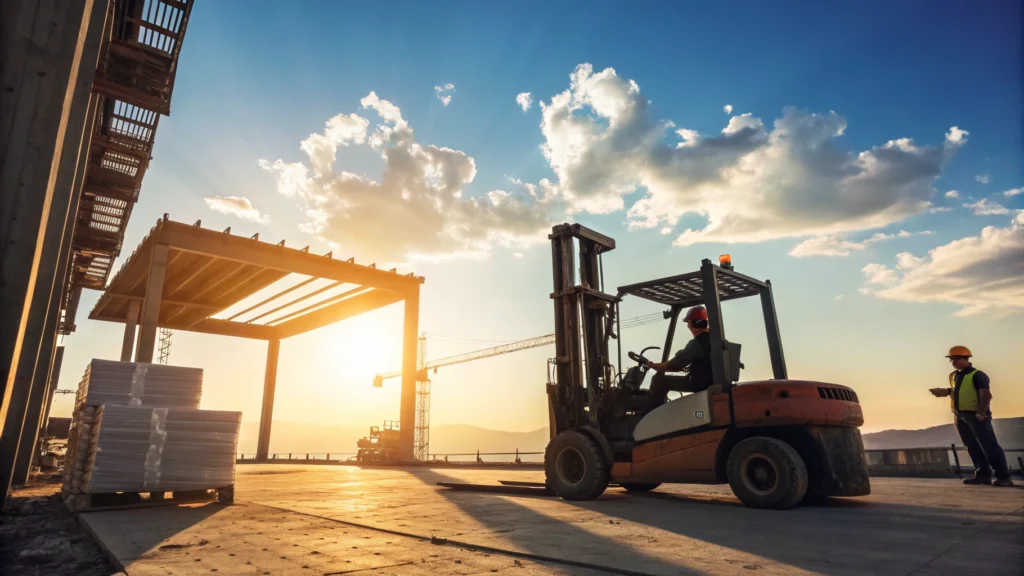
6,How Do You Calculate Forklift Load Capacity?
Being able to calculate a lift for Gabelstaplerkapazität is a valuable skill for businesses that use forklifts to lift heavy equipment or materials. Your forklift’s lift capacity depends on the size, the weight of the load, the center of gravity of the load and the forklift, and the type of forklift you’re using to transport the stuck piece of equipment.
Calculate your rated lift weight. Do not overload your forklift, and always account for having the load’s center of gravity somewhere other than the center of the forks. Use these formulas as a guide to make sure you don’t exceed your forklift’s lift capacity.
Lift capacity is a function of the weight of the load and the load center: the distance from the center of the load to the fork. The further the load is from the center of the lift, the less the forklift can lift. If the forklift can lift 5,000 pounds with a 24-inch load center, it may only lift 4,000 pounds if the load has a center of gravity two feet or more past the end of the fork.
The third factor involves the type of forklift. A reach forklift, a rough-terrain forklift, or a specialized forklift will have differing numbers from a standard warehouse forklift. Always check with the manufacturer’s guidelines or conduct a load test to make sure your forklift will safely hold the load.
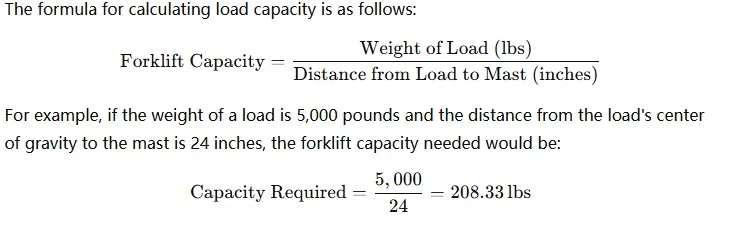
7,How Do Extreme Environmental Conditions Affect Forklift Capacity?
Don’t forget about extreme conditions, such as snow or high heat, which can also reduce lift of Gabelstaplerkapazität. Someone else considers all these things, so you don’t have to worry about being above the capacity of your forklift.
The colder it is, the worse your lift capacity is. The hotter it is, the worse your lift of Gabelstaplerkapazität. The more humid it is, the worse the lift capacity. The more ice or snow or moisture is on your ramp or your warehouse floor, the less lift capacity you have. All be conscious of these factors to make sure you never exceed your forklift’s rated capacity.
It’s always good to be aware of what the temperature is in your area. Forklifts are built with specific environmental conditions in mind, but extreme weather can negatively affect forklift performance. If it’s over 105 degrees for 3 or 4 days in a row, you need to be aware that your hydraulic system might run hot and be less efficient at lifting. If it’s cold, the fuel may gel a bit and not kick in the carburetion, which may cause the forklift not to run as strong as it could.
| Environmental Condition | Impact on Forklift Capacity | Recommended Forklift Type |
| Hot Weather (over 95°F) | Reduced hydraulic efficiency and fuel consumption. | Heavy-Duty Forklifts, Rough Terrain Forklifts |
| Cold Weather (below 32°F) | Thicker fuel and hydraulic fluid may reduce performance. | Forklifts designed for cold climates, such as those used in mining |
| High Humidity | Can affect fuel system and engine performance. | Telescopic Forklifts and Rough Terrain Forklifts for better maneuverability |
| Icy or Wet Surfaces | Reduced traction; forklift capacity may decrease. | Rough Terrain Forklifts with superior tires for better grip |
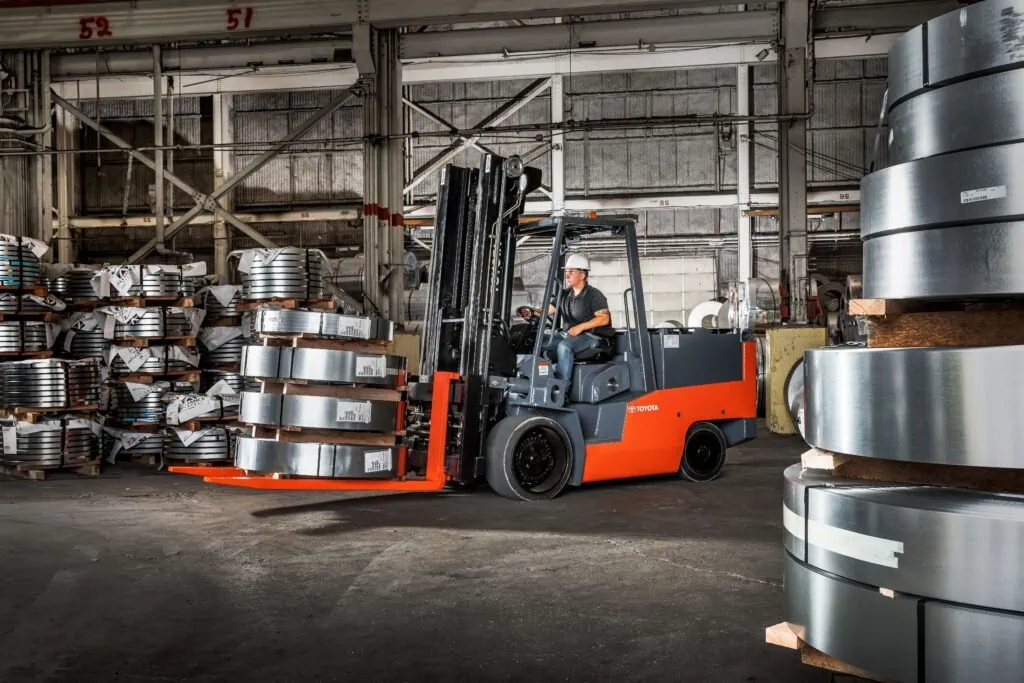
Zusammenfassung
It is essential to select the right capacity forklift for the work you are doing. Choose a forklift that has the capacity you need. Calculation of the lift weight is critical for every business that uses forklifts. Whether you are handling heavy equipment like an excavator or you are moving the attachment for an excavator, you need to choose a forklift that has the carrying capacity to handle that load safely. Typically, the center of gravity is the key issue. How far the load is from the fork is the load center, and the farther out the load is from the forklift, the less weight that lift can safely handle.
Also, if you want to know more information about:forklift lifting capacity,forklift weight capacity,forklift lift capacity chart, load capacity forklift,how much can a forklift lift,how much weight can a forklift lift,forklift load capacity,forklift capacity calculator Und forklift capacity calculator, please feel free to Kontakt mit uns.

